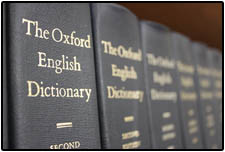Hours: 0 to 0
“Emotional Communication” – My Flawed Definition of Art
Defining art for photographers is fraught with difficulty. Ask an academic the question: “what is art?” and you will generally get either: a clever monologue, witty remark that dodges the question, or a combination of the two.
My answer is just two words: “Emotional communication.” Which, I admit, is neither clever nor witty, but it has the advantages of being both short and, for a photographer, I would assert useful.

Whereas the Oxford Dictionary (online) defines Art as:
“NOUN: The expression or application of human creative skill and imagination, typically in a visual form such as painting or sculpture, producing works to be appreciated primarily for their beauty or emotional power.”
IMHO: this is just more words, same meaning.
The most obvious flaw in the definition is that not all emotional communication is Art. My recent discussion with a workman who deemed it appropriate to dump a pile of rubble outside my house, contained a good deal of emotional communication, none of it art!
Please comment – the goal of this blog and 10,000 hour project as a whole is to learn and grow.
Also, please like or follow me through your favourite social media channel – links to the right.
Finding a Definition
“Emotional communication” struck me as being so obvious as to be a platitude, which is why I was astonished to find no reference to art when I Googled the term emotional communication. Apart that is from an article called “Art and Emotions” by Noy and Noy-Sharav in the 11th June 2013 edition of the International Journal of Applied Psychoanalytic Studies, in which they state that “art is the most potent form of emotional communication.” This also inherently suggests that art is something other, and that only one aspect of that other is emotional communication.
I hope other people will point out other flaws in this definition. My goal, as with most of my posts, is to revisit it at a later date with hopefully greater insight, and to do better next time.
Usefulness
Defining art in terms of two words divides the problem in two and places the emphasis on the definition of those two words:
“Communication”, the easier of the two to define, implies two parties: artist as communicator and audience as receiver. For communication to work:
- there must be a purpose, the communicator must have something they want to say
- the listener must be willing to listen
- both parties must share a common language (which requires some level of common experience).
Practices of good communication apply to art as they do to spoken or written communication.
“Emotional”, relates to the driving force to act in a certain way as a human being that is often difficult to describe accurately in words and generally not strictly logical.
Objective vs Abstract Art
The definition of art as emotional communication is useful in thinking about abstract as opposed to objective art.
Objective is the “of something”; art is the emotional communication.
Abstract art is art without the objective element, i.e., art devoid of-something-ness. Not all abstracts are art. According to the definition above, an abstract is art only if it communicates an emotion. It may have been created to represent an emotion, but if this is not clearly transmitted, is misunderstood or even if the viewer/ listener/ receiver is not open to hear the message, it’s not art.
Application to Photography
Finally, it strikes me that the definition of art, as emotional communication, provides a useful framework for the photographer:
Emotionally: the most damning criticism of a photograph is to describe it as a “record shot,” i.e., a technically accurate representation that evokes no emotional response. To avoid this, it is useful to address the problem explicitly with the following questions:
- How do I feel about this image?
- What am I trying to express?
- What techniques or devices am I using to convey these emotions
Communication: at the other end of the spectrum of bad photography sits the muddled image, i.e., the photo with no clear subject or purpose.
- Is there clarity? Is the subject of the image clearly identified including the emotional elements?
- Is there context?
- Have I managed to avoid, or remove, all distractions?
This blog was written whilst listening to: Bizet’s Carmen with Angela Gheorghiu
If you have any ideas or thoughts, please post comments below.
To see more posts on other photographic topics, or to follow my learning progress, please like or follow me on the social media channel of your choice to the right.